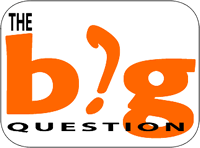Recently I had the pleasure of attending a presentation by the eLearning Coach, Connie Malamed, at an ISD breakfast we have for our Johns Hopkins instructional designers. The presentation was titled "Your Brain on Graphics." As most instructional designers know, graphics used effectively can greatly increase the efficacy of a learning event. However, Connie took it a step further and introduced us to how are brains are wired for graphics and shared great advice and examples of uber-effective use of graphics.
Her site, www.theelearningcoach.com, is an invaluable resource for learning more about using graphics in elearning, along with many other great resources and advice on elearning and instructional design she shares there. She also has written a book, "Visual Language for Designers," which I am adding to my reading list.
So, thank you eLearning Coach for the fantastic presentation and for sharing your knowledge at theelearningcoach.com.
Wednesday, March 23, 2011
Sunday, March 6, 2011
Informal learning... Maybe I Can Informally Assess Its Impact #LCBQ

This month's Big Question at Learning Circuits is regarding assessing the impact of informal learning. Or more specifically:
How do you assess whether your informal learning, social learning, continuous learning, performance support initiatives have the desired impact or achieve the desired results?
The extent of my experience in evaluation has focused on applying Kirkpatrick's model to classroom training and e-learning. Although there may be some elements of the model that lend itself to evaluating informal learning, I do not see the model as a whole working well for assessing the impact of informal learning.
I wish I could present a straight forward model that works well for assessing the impact of informal learning, but I do not have one to offer. What I do have are some off the cuff ideas on how to assess impact. Much of this will be anecdotal information collected, but none the less information that has value in assessing impact.
- Survey staff regarding what they have learned and how they applied it. It makes sense to use a social media tool to do this (e.g., use hash tags in Twitter). Please don't think smile sheet, instead think individual questions delivered via social media.
- Participate, participate, participate and see first hand what they are learning. They will probably also be talking about how they apply what they learned... That's some good anecdotal evidence of applying behavior.
- If you have identified specific things staff have learned and applied, look for how it has impacted the organization (results). Oops, easing into Kirkpatrick's model, but if you can, you can.
- Measure the "buzz." Are people talking about it and/or encouraging others to use social media and informal learning? What are they saying that is convincing others? Is it because it has made a difference in their abilities or lead to successes?
- Find the leaders. Who are leading discussions, being quoted, retweeted, yammed about, followed, liked, etc.? Recruit them to help you measure the impact. They have pull and can help you garner much of the fore-mentioned information.
Keep in mind, the above are ideas I "blue skied," but if you have additional ideas, I would love to hear them in the comments section. Don't forget to check the ever increasing posts and comments on the LCBQ blog and add your 2 cents there too.
Subscribe to:
Posts (Atom)